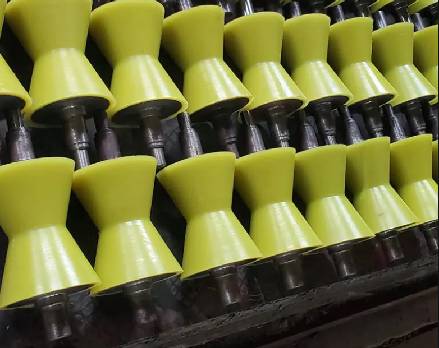 Afrikaans
Afrikaans  Albanian
Albanian  Amharic
Amharic  Arabic
Arabic  Armenian
Armenian  Azerbaijani
Azerbaijani  Basque
Basque  Belarusian
Belarusian  Bengali
Bengali  Bosnian
Bosnian  Bulgarian
Bulgarian  Catalan
Catalan  Cebuano
Cebuano  Corsican
Corsican  Croatian
Croatian  Czech
Czech  Danish
Danish  Dutch
Dutch  English
English  Esperanto
Esperanto  Estonian
Estonian  Finnish
Finnish  French
French  Frisian
Frisian  Galician
Galician  Georgian
Georgian  German
German  Greek
Greek  Gujarati
Gujarati  Haitian Creole
Haitian Creole  hausa
hausa  hawaiian
hawaiian  Hebrew
Hebrew  Hindi
Hindi  Miao
Miao  Hungarian
Hungarian  Icelandic
Icelandic  igbo
igbo  Indonesian
Indonesian  irish
irish  Italian
Italian  Japanese
Japanese  Javanese
Javanese  Kannada
Kannada  kazakh
kazakh  Khmer
Khmer  Rwandese
Rwandese  Korean
Korean  Kurdish
Kurdish  Kyrgyz
Kyrgyz  Lao
Lao  Latin
Latin  Latvian
Latvian  Lithuanian
Lithuanian  Luxembourgish
Luxembourgish  Macedonian
Macedonian  Malgashi
Malgashi  Malay
Malay  Malayalam
Malayalam  Maltese
Maltese  Maori
Maori  Marathi
Marathi  Mongolian
Mongolian  Myanmar
Myanmar  Nepali
Nepali  Norwegian
Norwegian  Norwegian
Norwegian  Occitan
Occitan  Pashto
Pashto  Persian
Persian  Polish
Polish  Portuguese
Portuguese  Punjabi
Punjabi  Romanian
Romanian  Russian
Russian  Samoan
Samoan  Scottish Gaelic
Scottish Gaelic  Serbian
Serbian  Sesotho
Sesotho  Shona
Shona  Sindhi
Sindhi  Sinhala
Sinhala  Slovak
Slovak  Slovenian
Slovenian  Somali
Somali  Spanish
Spanish  Sundanese
Sundanese  Swahili
Swahili  Swedish
Swedish  Tagalog
Tagalog  Tajik
Tajik  Tamil
Tamil  Tatar
Tatar  Telugu
Telugu  Thai
Thai  Turkish
Turkish  Turkmen
Turkmen  Ukrainian
Ukrainian  Urdu
Urdu  Uighur
Uighur  Uzbek
Uzbek  Vietnamese
Vietnamese  Welsh
Welsh  Bantu
Bantu  Yiddish
Yiddish  Yoruba
Yoruba  Zulu
Zulu Conveyor Pulley Selection Guide and Specifications for Optimal Performance Solutions
Understanding Conveyor Pulley Catalogues A Guide for Industry Professionals
In the world of industrial operations, conveyor systems play a vital role in efficiently transporting materials across various processes. A key component of these systems is the conveyor pulley, which aids in the movement of belts, ensuring a seamless flow of materials. Understanding conveyor pulley catalogues is crucial for selecting the right components that meet specific operational needs.
What is a Conveyor Pulley?
A conveyor pulley is a cylindrical device used at the ends of a conveyor belt system. Its primary function is to drive the belt and redirect it around pulleys in a loop. Pulleys are categorized based on their function, including drive pulleys, return pulleys, snub pulleys, and take-up pulleys. Each type plays a distinct role in enhancing the efficiency and performance of conveyor systems.
Why Consult a Conveyor Pulley Catalogue?
A conveyor pulley catalogue serves as a comprehensive resource, providing detailed specifications and options for various pulley types. By consulting a catalogue, professionals can gain insights into the construction materials, sizes, load capacities, and operational features of different pulleys. This information is essential for making informed decisions that align with the specific requirements of a project.
Key Components of a Conveyor Pulley Catalogue
1. Material Specifications A significant aspect of pulleys is their construction material. Common materials include steel, aluminum, and composite materials. Each material has unique properties regarding strength, weight, and resistance to environmental factors such as corrosion.
2. Dimensions and Load Capacity Pulleys are available in various sizes, which must align with the dimensions of the conveyor system. The catalogue typically lists the diameter, width, and other critical dimensions. Load capacity ratings are also provided, indicating the maximum weight each pulley can support while maintaining performance integrity.
3. Design Features Modern conveyor pulleys come with a range of design features that enhance performance. These may include lagging options to increase traction, shaft design variations for better alignment, and the incorporation of bearings that ensure smooth operation and reduced wear.
conveyor pulley catalogue

4. Optional Accessories Many catalogues offer information on optional accessories such as guards, brackets, and maintenance kits. These accessories are essential for ensuring the longevity and safety of the conveyor system.
5. Applications Conveyor pulleys are used across various industries, including mining, forestry, manufacturing, and logistics. Catalogues often provide insights into the most suitable pulley types for specific applications, helping businesses choose components tailored to their operational needs.
How to Choose the Right Pulley
Selecting the right conveyor pulley involves several considerations
- Assess System Requirements Evaluate the specific requirements of your conveyor system, including the type of materials being transported, travel distance, and environmental conditions. - Consult the Catalogue Use the catalogue to compare various options, considering factors such as size, material, and load capacity. Look for products that meet or exceed your system's specifications.
- Seek Expert Advice If in doubt, consult with industry professionals or manufacturers. Their expertise can guide you towards making the best choice for your specific application.
- Consider Durability and Maintenance Opt for pulleys that not only meet your current needs but also offer durability and ease of maintenance to minimize operational disruptions.
Conclusion
In summary, conveyor pulley catalogues are essential tools for industry professionals involved in the design and maintenance of conveyor systems. By understanding the various components, features, and applications of conveyor pulleys, businesses can enhance their operational efficiency, ensuring reliable material transport across their processes. Whether you are replacing an old pulley or designing a new conveyor system, a thorough review of the catalogue will empower you to make informed decisions, ultimately contributing to the success of your operations.
-
Revolutionizing Conveyor Reliability with Advanced Rubber Lagging PulleysNewsJul.22,2025
-
Powering Precision and Durability with Expert Manufacturers of Conveyor ComponentsNewsJul.22,2025
-
Optimizing Conveyor Systems with Advanced Conveyor AccessoriesNewsJul.22,2025
-
Maximize Conveyor Efficiency with Quality Conveyor Idler PulleysNewsJul.22,2025
-
Future-Proof Your Conveyor System with High-Performance Polyurethane RollerNewsJul.22,2025
-
Driving Efficiency Forward with Quality Idlers and RollersNewsJul.22,2025





























